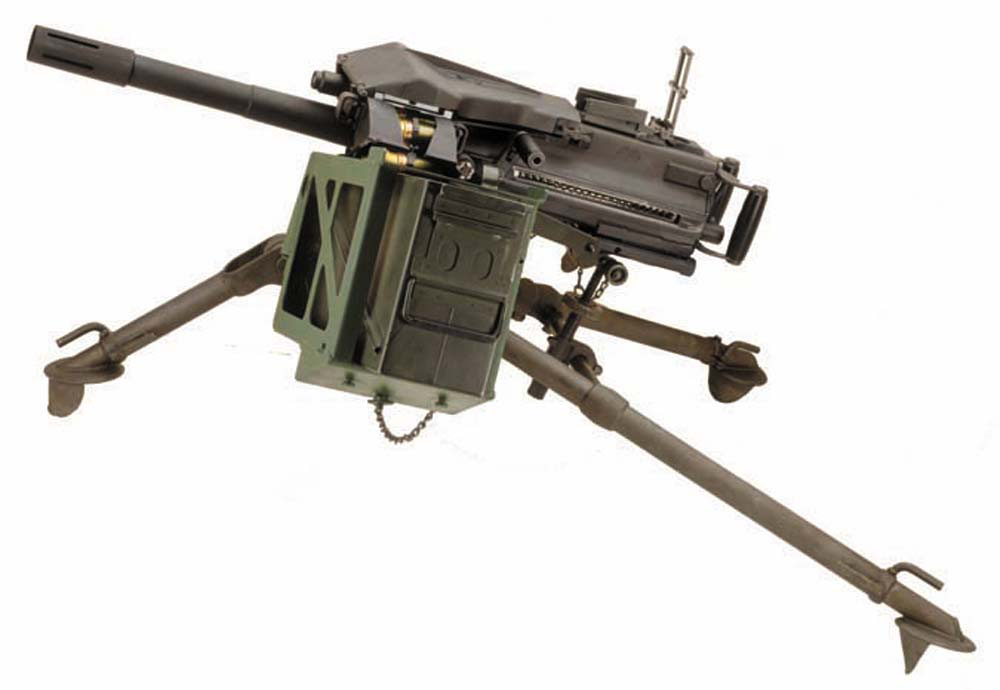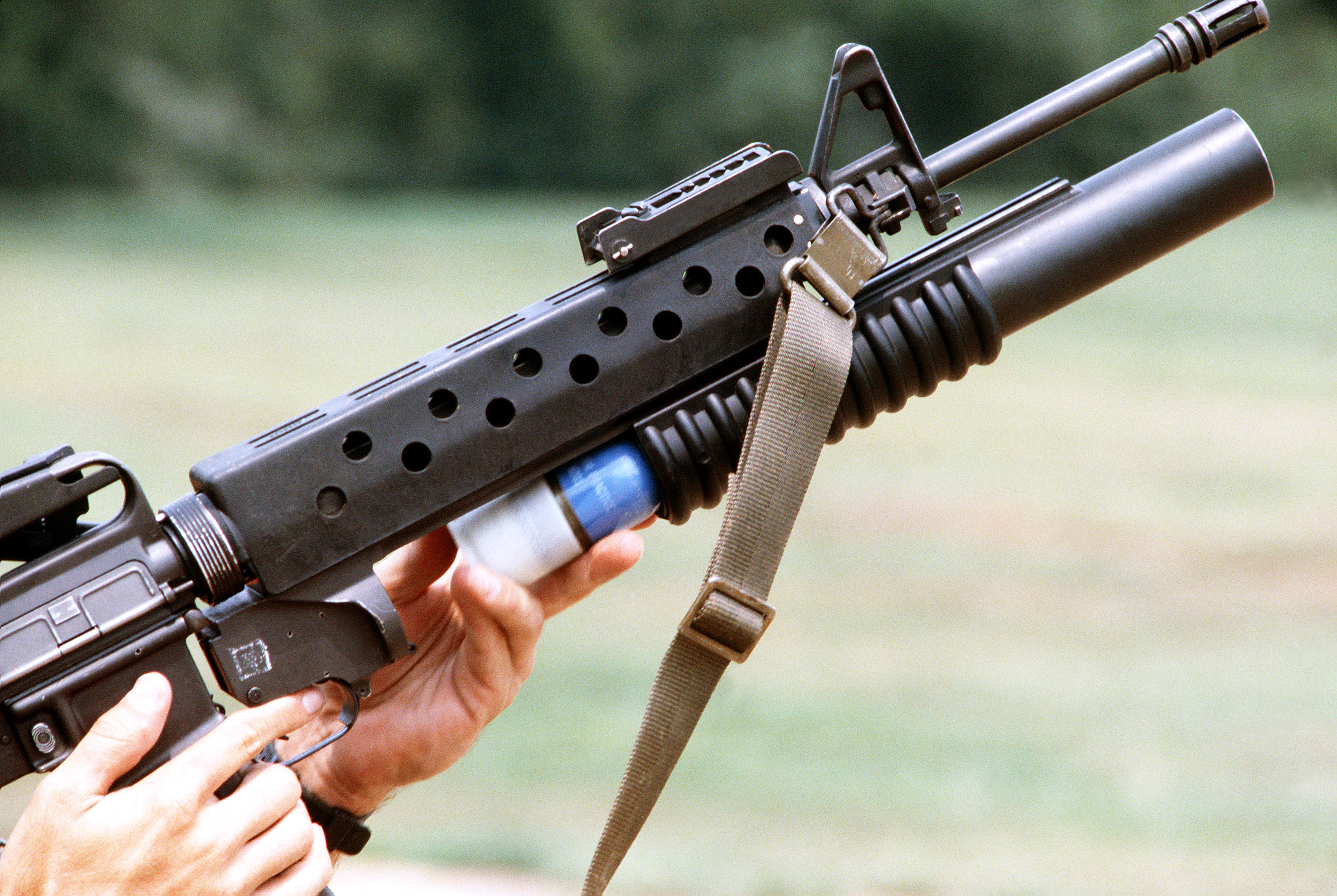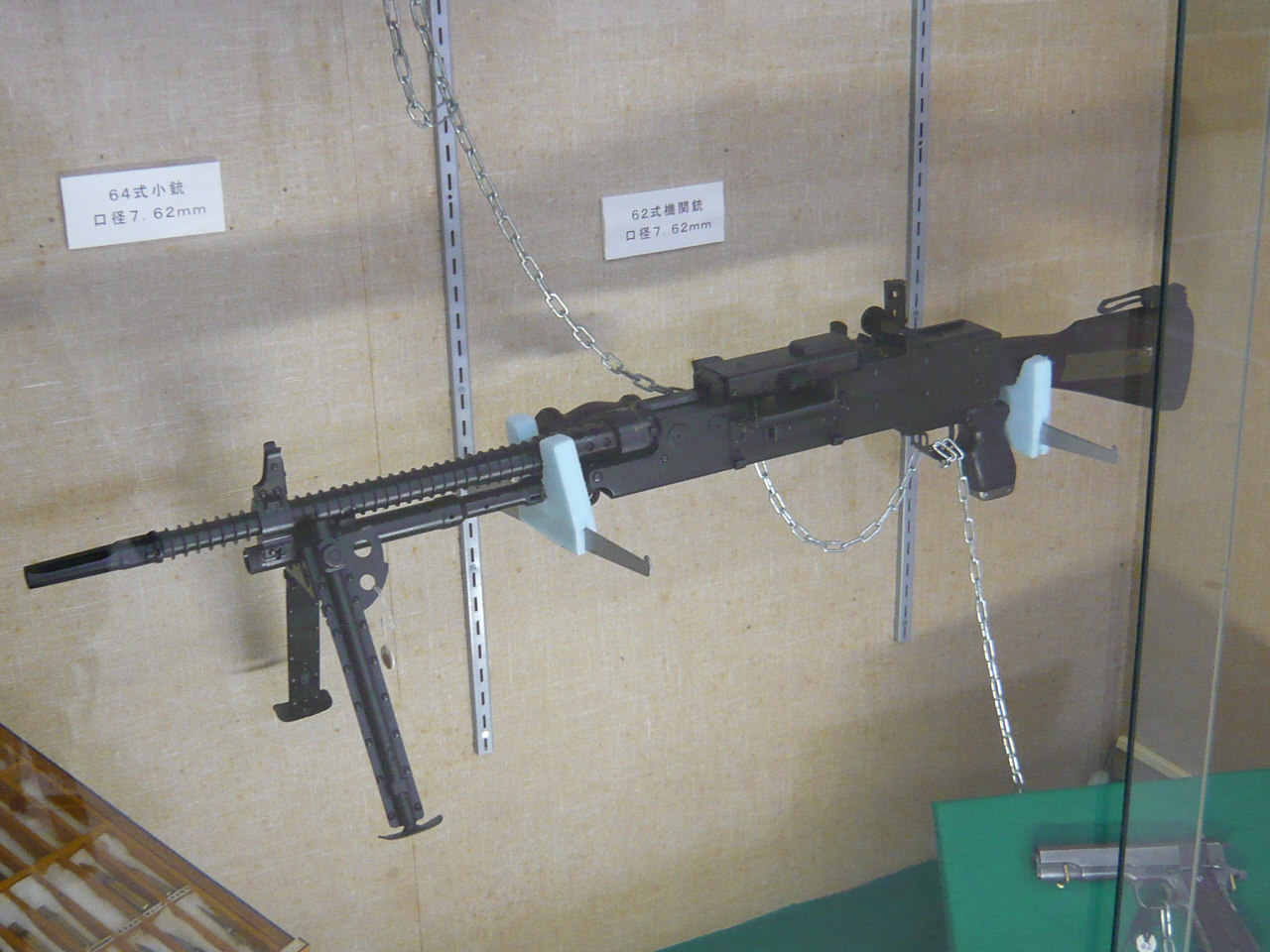|
Howa Type 96
The is a Japanese automatic grenade launcher made by Howa since 1996. History With the need of a heavy fire support weapon in Japan Self-Defense Forces The Japan Self-Defense Forces ( ja, 自衛隊, Jieitai; abbreviated JSDF), also informally known as the Japanese Armed Forces, are the unified ''de facto''Since Article 9 of the Japanese Constitution outlaws the formation of Military, armed f ... (JSDF) service aside from the use of the Sumitomo Type 62 GPMG and the Sumitomo M2HB machine gun, Howa first created and produced the weapon in 1996. Use The Howa Type 96 can be used by both infantry and armored vehicles, the former with a tripod and the latter by being placed on a weapon mount. It is seen as one of the main weapons mounted on the Type 96 Armored Personnel Carrier. Operational details On the left side of the Type 96 is a feeding bay where the 40 mm grenades belt can be loaded onto the AGL. See also * Comparison of automatic grenade launchers References ... [...More Info...] [...Related Items...] OR: [Wikipedia] [Google] [Baidu] |
Automatic Grenade Launcher
An automatic grenade launcher (AGL) or grenade machine gun is a grenade launcher that is capable of fully automatic fire, and is typically loaded with either an ammunition belt or magazine. These weapons are often mounted on vehicles or helicopters, as when these weapons are moved by infantry the weapon, its tripod, and ammunition, are a heavy load, requiring a small team. Other types of grenade launchers are typically much lighter and can easily be carried by just a single soldier. The Mark 19 Automatic Grenade Launcher, first fielded by the United States in 1966, and still widely used today, weighs 62.5 kg (137.58 lb) when attached to its tripod, and loaded with a box of ammunition. For comparison, the single-shot M79 grenade launcher weighs 2.93 kg (6.45 lb). Regardless of their weight, AGLs are still highly effective, and the Mark 19 is capable of indirect fire up to 2,200 metres, a role traditionally reserved for mortars. Even though the round carries less explosive than a 60 ... [...More Info...] [...Related Items...] OR: [Wikipedia] [Google] [Baidu] |
Howa
is a Japanese machinery manufacturer. The company is known internationally for their production of military and civilian firearms. However, they also manufacture products such as machine tools, sweeping vehicles and windows and doors. History The was established by Sakichi Toyoda in February, 1907. In 1941, Toyoda's Loom Works merged with and was renamed . The company was renamed to its current name at the end of World War II and restarted manufacturing textile machinery. Weapon manufacturing Military use Toyoda's Loom Works began manufacturing armaments in 1932. During World War II Since 1940, Howa has been heavily involved in the Japanese armaments industry, and was involved in manufacturing the famous Arisaka rifle series including Type 99 rifle, parts of Type 38 rifle, artillery pieces, airplane parts, and ammunition. Many of their World War II-era weapons are highly sought after collectors' items. Post WWII Howa created copies of the US M1 Garand and t ... [...More Info...] [...Related Items...] OR: [Wikipedia] [Google] [Baidu] |
40 Mm Grenade
40 mm grenade (also styled 40mm grenade) is a generic class-name for grenade launcher ammunition (subsonic shells) in caliber. The generic name stems from the fact that several countries have developed or adopted grenade launchers in 40 mm caliber. This is a general collection of the world's many different "40 mm grenades". NATO NATO currently uses three standardized 40 mm grenade families: 40 mm low velocity (LV), 40 mm medium velocity (MV), and 40 mm high velocity (HV). Low- and medium-velocity cartridges are used for different hand-held grenade launchers, while the high-velocity cartridge is used for automatic grenade launchers. 40×46 mm LV (40 mm low velocity) ''40×46 mm LV'' (''low velocity'') is a NATO-standard high–low grenade launcher cartridge meant for hand-held grenade launchers, such as the M79, M203, Milkor MGL, and Heckler & Koch AG36. The propellant has low pressure and gives the projectile an average velocity of depending on the ammun ... [...More Info...] [...Related Items...] OR: [Wikipedia] [Google] [Baidu] |
Blow Forward
Blow-forward is a firearm action where the propellant gas pressure and the friction of the bullet traveling down the bore drag the whole gun barrel forward to facilitate the opening of the breech. This forward barrel motion provides most of the energy required to eject a spent cartridge case and chamber a fresh round of ammunition, and contains a minimum of moving parts, and thus is more compact than other operating mechanisms of equal barrel length. Description The vast majority of repeating firearms have their barrel fixed to the receiver or largely immobile in relation to the frame, with the breech face (as part of a moving bolt or slide) moving within the frame against the barrel. In contrast, the frame of a blow-forward firearm incorporates a fixed breech face, with the barrel being mobile and sliding away from the breech (frame) during the weapon's cycling. Due to the reduced mass of rearward-traveling parts coupled with the increased mass of the forward moving parts ... [...More Info...] [...Related Items...] OR: [Wikipedia] [Google] [Baidu] |
Automatic Grenade Launcher
An automatic grenade launcher (AGL) or grenade machine gun is a grenade launcher that is capable of fully automatic fire, and is typically loaded with either an ammunition belt or magazine. These weapons are often mounted on vehicles or helicopters, as when these weapons are moved by infantry the weapon, its tripod, and ammunition, are a heavy load, requiring a small team. Other types of grenade launchers are typically much lighter and can easily be carried by just a single soldier. The Mark 19 Automatic Grenade Launcher, first fielded by the United States in 1966, and still widely used today, weighs 62.5 kg (137.58 lb) when attached to its tripod, and loaded with a box of ammunition. For comparison, the single-shot M79 grenade launcher weighs 2.93 kg (6.45 lb). Regardless of their weight, AGLs are still highly effective, and the Mark 19 is capable of indirect fire up to 2,200 metres, a role traditionally reserved for mortars. Even though the round carries less explosive than a 60 ... [...More Info...] [...Related Items...] OR: [Wikipedia] [Google] [Baidu] |
Japan Self-Defense Forces
The Japan Self-Defense Forces ( ja, 自衛隊, Jieitai; abbreviated JSDF), also informally known as the Japanese Armed Forces, are the unified ''de facto''Since Article 9 of the Japanese Constitution outlaws the formation of Military, armed forces, the JSDF cannot be considered a fully-fledged military force. Armed forces, military forces of Japan established in 1954. The self-defence forces consists of the Japan Ground Self-Defense Force, the Japan Maritime Self-Defense Force, and the Japan Air Self-Defense Force. They are controlled by the Ministry of Defense (Japan), Ministry of Defense, with the Prime Minister as commander-in-chief. In recent years, the JSDF has engaged in international peacekeeping operations with the United Nations peacekeeping, United Nations. Japan–North Korea relations, Tensions with North Korea have reignited debate over the status of the JSDF and its relationship to Japanese society. Since 2010, the JSDF has refocused from countering the former So ... [...More Info...] [...Related Items...] OR: [Wikipedia] [Google] [Baidu] |
Sumitomo NTK-62
The is the standard issue general-purpose machine gun of the Japan Self-Defense Forces, known as the Type 62 GPMG. When first issued it fulfilled both light and medium machine gun support throughout the JGSDF. Though the Sumitomo Heavy Industries' M249 firing the smaller 5.56×45mm NATO cartridge has largely replaced it in the light machine gun role at the squad level in the JGSDF, the Type 62 still plays the support role at platoon and company level for the infantry as a medium machine gun firing the more powerful 7.62×51mm NATO cartridge. It also continues to be used as a co-axial weapon in various armored vehicles, including tanks and APCs. Like all modern Japanese-made firearms, it was never exported. History After years of using the Browning M1919A4 as its standard GPMG during the early days of founding the Japan Self-Defense Forces, Sumitomo Heavy Industries had manufactured the NTK-62 GPMG, designed at Nittoku Metal Industry (NTK) by Masaya Kawamura's team. The GPMG ... [...More Info...] [...Related Items...] OR: [Wikipedia] [Google] [Baidu] |
M2 Browning Machine Gun
The M2 machine gun or Browning .50 caliber machine gun (informally, "Ma Deuce") is a heavy machine gun that was designed towards the end of World War I by John Browning. Its design is similar to Browning's earlier M1919 Browning machine gun, which was chambered for the .30-06 cartridge. The M2 uses Browning's larger and more powerful .50 BMG (12.7 mm) cartridge. The design has had many designations; the official U.S. military designation for the current infantry type is Browning Machine Gun, Cal. .50, M2, HB, Flexible. It is effective against infantry, unarmored or lightly armored vehicles and boats, light fortifications, and low-flying aircraft. The gun has been used extensively as a vehicle weapon and for aircraft armament by the United States since the 1930s. It was heavily used during World War II, the Korean War, the Vietnam War, the Falklands War, the Soviet–Afghan War, the Gulf War, the Iraq War, and the War in Afghanistan. It is the primary heavy machine gun of ... [...More Info...] [...Related Items...] OR: [Wikipedia] [Google] [Baidu] |
Type 96 Armored Personnel Carrier
The is an armoured vehicle that entered service with Japan in 1996. This vehicle complements the existing fleet of tracked Type 73 Armored Personnel Carriers already in service. Description The driver sits on the right side of the vehicle with the engine to his left. This position is fitted with three periscopes, the center of which can be replaced by a passive night vision periscope. For service in Iraq it appears that this position was fitted with an assembly of three windows to enable the driver to drive with his head out of the vehicle for greater situational awareness while still protected from small-arms fire. Behind him is the commander/gunner in a cupola that traverses 360° that can carry either a 40 mm grenade launcher (Type A) or a .50 caliber (12.7 mm) M2HB machine gun (Type B). The passenger compartment has space for 8 infantrymen who can use 2 firing ports on each side. As of 2001 Japan reported to the United Nations Office for Disarmament Affairs that 72 Typ ... [...More Info...] [...Related Items...] OR: [Wikipedia] [Google] [Baidu] |
Comparison Of Automatic Grenade Launchers
An automatic grenade launcher (AGL) or grenade machine gun is a grenade launcher that is capable of fully automatic fire, and is typically loaded with either an ammunition belt or magazine. These weapons are often mounted on vehicles or helicopters, as when these weapons are moved by infantry the weapon, its tripod, and ammunition, are a heavy load, requiring a small team. Other types of grenade launchers are typically much lighter and can easily be carried by just a single soldier. The Mark 19 Automatic Grenade Launcher, first fielded by the United States in 1966, and still widely used today, weighs 62.5 kg (137.58 lb) when attached to its tripod, and loaded with a box of ammunition. For comparison, the single-shot M79 grenade launcher weighs 2.93 kg (6.45 lb). Regardless of their weight, AGLs are still highly effective, and the Mark 19 is capable of indirect fire up to 2,200 metres, a role traditionally reserved for mortars. Even though the round carries less explosive than a ... [...More Info...] [...Related Items...] OR: [Wikipedia] [Google] [Baidu] |
Blow Forward Firearms
Blow commonly refers to: *Cocaine *Exhalation *Strike (attack) Blow, Blew, Blowing, or Blown may also refer to: People *Blew (surname) * Blow (surname) Arts and entertainment Music *The Blow, an American electro-pop band Albums * ''Blow'' (Foetus album), 2001 * ''Blow'' (Ghinzu album) or the title song, 2004 * ''Blow'' (Heather Nova album), 1993 * ''Blow'' (Messy Marv and Berner album), 2009 **'' Blow: Blocks and Boat Docks'' or the title song, by Messy Marv and Berner, 2010 * ''Blow'' (Red Lorry Yellow Lorry album) or the title song, 1989 * ''Blow'' (Straitjacket Fits album), 1993 Songs *"Blew", by Nirvana, 1989 * "Blow" (Beyoncé song), 2013 * "Blow" (Ed Sheeran, Chris Stapleton and Bruno Mars song), 2019 * "Blow" (Kesha song), 2011 * "Blow" (Martin Solveig song), 2014 *"B.L.O.W.", by Tory Lanez, 2015 *"Blow", by Ashnikko, 2018 *"Blow", by Atreyu from '' Lead Sails Paper Anchor'', 2007 *"Blow", by the Prom Kings from ''The Prom Kings'', 2005 *"Blow", by Rick Ross from ... [...More Info...] [...Related Items...] OR: [Wikipedia] [Google] [Baidu] |






